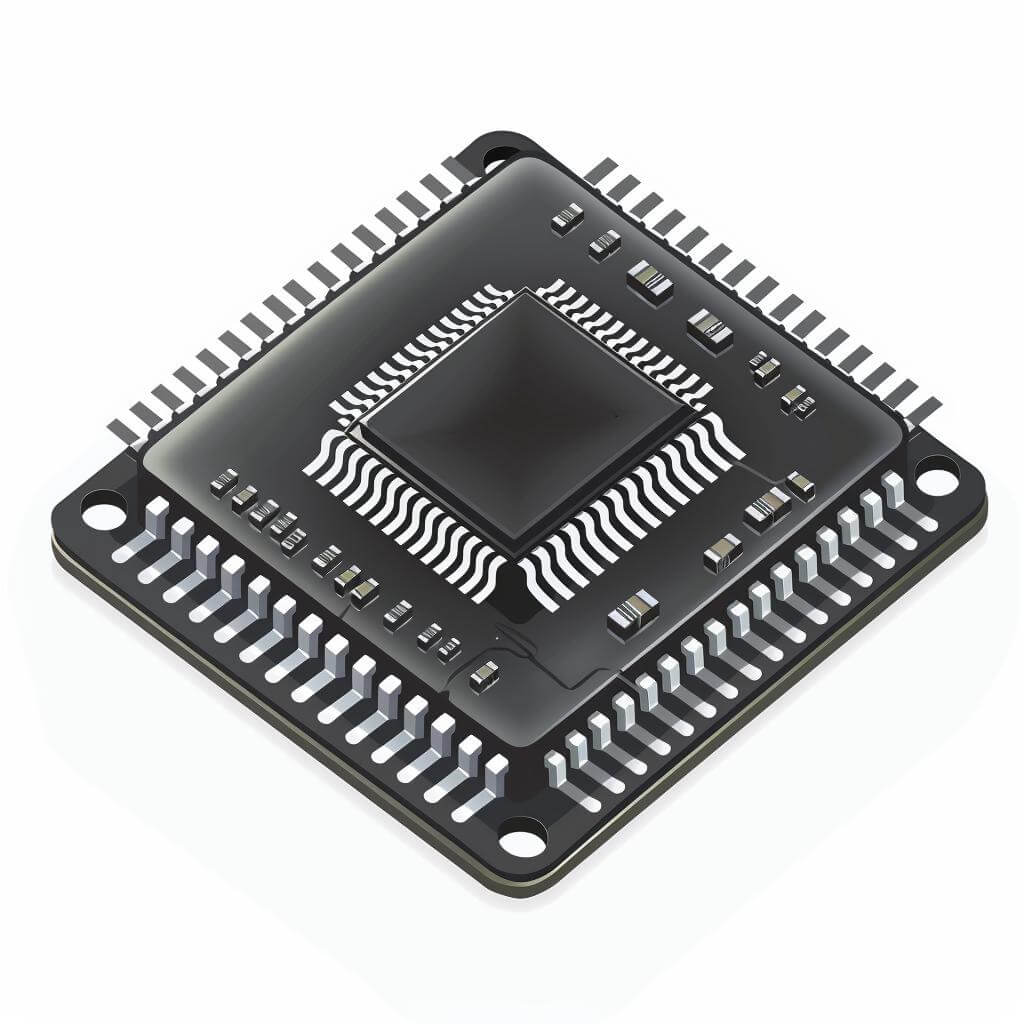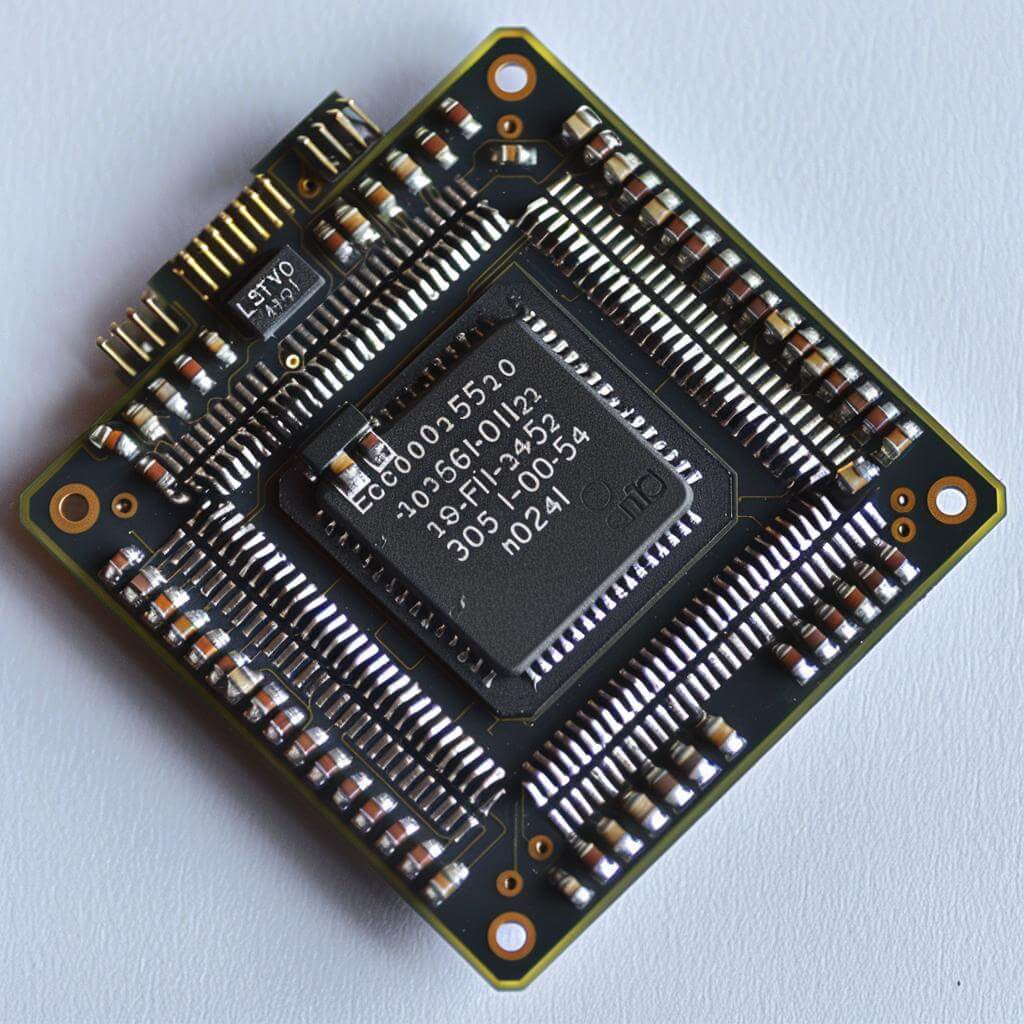
MSP430F5438A vs MSP430F5529: A Detailed Analysis of Their Capabilities
Global electronic component supplier AMPHEO PTY LTD: Rich inventory for one-stop shopping. Inquire easily, and receive fast, customized solutions and quotes.
What are MSP430 Microcontrollers?
Texas Instruments MSP430 line of microcontrollers is renowned for its exceptional performance and deficient power consumption. These 16-bit microcontrollers are intended for uses where extended battery life and effective processing are necessities. To meet a wide range of application needs, the MSP430 family offers several devices with various configurations and functionalities.
What is MSP430F5438A?

Among the MSP430 series, the MSP430F5438A is a high-performance microcontroller with an extensive feature set and peripherals. It is made to handle the needs of sophisticated applications that need a lot of processing power and substantial peripheral integration.
Features of MSP430F5438A
The MSP430F5438A boasts several features that make it suitable for demanding applications. Key features include:
16-Bit RISC Architecture: Offers minimal power consumption and effective processing.
Large Memory Capacity: Supports complicated programs with up to 256KB of Flash and 16KB of SRAM.
Rich Peripheral Set: Consists of ADC channels, numerous timers, and serial interfaces (SPI, I2C, UART).
Low Power Modes: A variety of low-power modes are available for portable apps to increase battery life.
Flexible Clock System: Enables dynamic modifications to satisfy application needs.
DMA Controller: Increases the effectiveness of data transport.
Video related to MSP430F5438A
What is MSP430F5529?

Another potent microcontroller in the MSP430 family, the MSP430F5529 is renowned for its integrated USB capabilities, performance balance, and memory capacity. Applications needing dependable performance and effective processing would benefit greatly from it.
Features of MSP430F5529
The MSP430F5529 also offers a range of features that make it a versatile microcontroller for various applications. Key features include:
16-Bit RISC Architecture: A 16-bit RISC architecture guarantees effective processing while using the least amount of electricity.
Integrated USB Controller: Facilitates seamless integration with USB devices by supporting USB 2.0.
Ample Memory: 8KB of SRAM and up to 128KB of Flash, ideal for a variety of uses.
Extensive Peripheral Set: ADC channels, timers, and communication interfaces (UART, SPI, and I2C) are all part of the extensive peripheral set.
Low Power Modes: This mode is perfect for battery-operated devices because it is designed for ultra-low power operation.
High-Speed Oscillator: A high-speed oscillator makes timing operations precise and quick.
MSP430F5438A VS MSP430F5529
MSP430F5438A
Best for: Use cases where a larger memory capacity and substantial peripheral integration are needed.
Key Features: Key features include a variable clock system, low power modes, a rich peripheral set, large memory, and a DMA controller.
Applications: Applications include consumer electronics, medical equipment, and industrial automation.
MSP430F5529
Best for: Programs requiring dependable performance and integrated USB capability.
Key Features: Important features include a high-speed oscillator, a flexible peripheral set, an integrated USB controller, lots of memory, and ultra-low power consumption.
Applications: Applications include high-end consumer electronics, sophisticated medical equipment, and industrial control systems.
Here’s a table that tells the key difference between them.
|
Feature |
MSP430F5438A |
MSP430F5529 |
|
Architecture |
16-bit RISC |
16-bit RISC |
|
CPU Frequency |
Up to 25 MHz |
Up to 25 MHz |
|
Flash Memory |
256 KB |
128 KB |
|
RAM |
16 KB |
8 KB |
|
GPIO Pins |
87 |
63 |
|
ADC |
12-bit ADC with 16 channels |
12-bit ADC with 8 channels |
|
DAC |
Not available |
12-bit DAC (2 channels) |
|
Communication Interfaces |
4x USCI (UART/SPI/I2C) |
4x USCI (UART/SPI/I2C) |
|
USB Interface |
Not available |
Full-speed USB 2.0 |
|
Operating Voltage |
1.8V to 3.6V |
1.8V to 3.6V |
|
Package Options |
113 BGA, 100 LQFP |
80 QFN, 64 QFN, 80 LQFP, 64 LQFP |
|
Special Features |
Large memory and GPIO count |
USB support and integrated DAC |
Specifications of MSP430F5438A
Understanding the technical specifications of the MSP430F5438A is crucial for proper integration and application. Here are the main specifications:
CPU Speed: Up to 25 MHz
Flash Memory: 256KB
SRAM: 16KB
Operating Voltage: 1.8V to 3.6V
Timers: 5
ADC Channels: 12-bit, up to 16 channels
Communication Interfaces: 4x UART, 2x SPI, 2x I2C
Low Power Modes: 5
DMA Channels: 3
Package Options: 100-pin LQFP, 80-pin QFN
Specifications of MSP430F5529
The technical specifications of the MSP430F5529 highlight its capabilities and suitability for a variety of applications. Here are the main specifications:
CPU Speed: Up to 25 MHz
Flash Memory: 128KB
SRAM: 8KB
Operating Voltage: 1.8V to 3.6V
USB 2.0 Controller: Yes
Timers: 4
ADC Channels: 12-bit, up to 8 channels
Communication Interfaces: 2x UART, 2x SPI, 2x I2C
Low Power Modes: 5
Package Options: 80-pin LQFP
Applications of MSP430F5438A
The MSP430F5438A is used in various applications due to its extensive peripheral set and high memory capacity. Key applications include:
Industrial Automation
Sensor Interface: a system for integrating and handling industrial sensor data.
Motor Control: Motor control refers to the precise management of motors in automated systems.
Data Acquisition Systems: Systems for gathering and processing data for oversight and management: data acquisition.
Medical Devices
Portable Medical Equipment: Devices like blood glucose and ECG monitors are examples of portable medical equipment.
Patient Monitoring Systems: These offer real-time vital sign monitoring for patients.
Diagnostic Equipment: Precision data processing and measurement for diagnostic purposes.
Consumer Electronics
Wearable Devices: Smartwatches and fitness trackers are powered by wearable technology.
Home Automation: Enabling security systems thermostats and other smart home appliances is known as home automation.
Portable Gadgets: Powering e-readers and portable game consoles are portable gadgets.
Applications of MSP430F5529
The MSP430F5529 finds applications in areas requiring efficient processing and reliable performance. Key applications include:
Industrial Control Systems
PLCs: Logic controllers with programmable logic for automation applications.
Smart Sensors: gathering, interpreting, and sharing sensor data.
Industrial Network Gateways: They help industrial networks communicate with one another.
Medical Devices
Advanced Patient Monitoring Systems: reliable data processing combined with real-time monitoring.
Portable Ultrasound Machines: Managing intricate imaging information.
Medical Data Loggers: Big amounts of medical data are stored and transferred via medical data logs.
High-End Consumer Devices
Advanced Wearables: Providing sophisticated functionality to smartwatches.
High-Resolution Home Automation Systems: Robust Home Automation Systems: Facilitating advanced intelligent household appliances.
Portable Media Players: Playing high-definition music and video on portable media players.
How to Integrate MSP430F5438A and MSP430F5529?
Proper integration of the MSP430F5438A and MSP430F5529 is crucial for optimal performance. Texas Instruments offers a range of development tools to support this process:
Development Boards
MSP430 LaunchPad: An MSP430 microcontroller development platform that is user-friendly and reasonably priced.
MSP-TS430PZ100USB: The development board MSP-TS430PZ100USB was created especially for the MSP430F5529 and MSP430F5438A.
Software Tools
Code Composer Studio (CCS): An integrated development environment (IDE) for creating and debugging MSP430 applications is called Code Composer Studio (CCS).
EnergyTrace Technology: An instrument for tracking and enhancing MSP430-based systems' power usage.
Libraries and Middleware
MSP430Ware: An extensive set of MSP430 microcontroller libraries, code snippets, and documentation.
USB Libraries: MSP430 programs can use these libraries to implement USB communication.
MSP430F5438A and MSP430F5529 Considerations
When using the MSP430F5438A and MSP430F5529, consider the following factors to ensure optimal performance:
Environmental Conditions
Temperature: To preserve accuracy, make sure the operating temperature is within the given range.
Humidity: To avoid damaging the sensor, shield it from excessive humidity and moisture.
Electrical Interference
EMI/RFI Shielding: EMI/RFI Protects the sensor from radio frequency and electromagnetic interference by implementing shielding.
Grounding: To reduce noise and signal interference, make sure the grounding is correct.
Power Management
Low Power Modes: To save power in battery-powered applications, make use of the sensor's low power modes.
Power Supply Stability: To preserve precise measurements and dependable communication, make sure the power supply is stable.
Conclusion
The MSP430F5438A and MSP430F5529 microcontrollers are well-suited for a range of applications due to their comprehensive features and capabilities. Applications requiring more peripheral integration and memory capacity are best served by the MSP430F5438A, while applications demanding integrated USB capabilities and dependable performance are best served by the MSP430F5529. You can choose the microcontroller that best fits the requirements of your particular project by studying its characteristics, technical details, and applications.
FAQs
What is the main difference between MSP430F5438A and MSP430F5529?
While the MSP430F5529 boasts dependable performance and integrated USB capabilities, the MSP430F5438A delivers a larger memory capacity and a more comprehensive peripheral set.
Can I use MSP430F5529 for USB applications?
The MSP430F5529 is appropriate for USB applications since it has an integrated USB 2.0 controller.
How do I program these microcontrollers?
With Texas Instruments' Code Composer Studio (CCS) IDE, which offers extensive programming and debugging capabilities, you can program the MSP430F5438A and MSP430F5529.
What are the power consumption characteristics of these microcontrollers?
To increase battery life in portable applications, both microcontrollers have several low-power modes built in.
Related Articles
- ·Stratix 10 VS Stratix V: Which FPGA is Right for Your Next Project?
- ·Intel Xeon Platinum 8454H vs AMD EPYC: Which Reigns Supreme?
- ·A Deep Dive into the AMD EPYC 4564P Processor
- ·Comparing MSP430F6659 and MSP430F5419A: Which One is Right for Your Project?
- ·Exploring the Features of MSP430F5529 and MSP430F5638 Microcontrollers
- ·Demystifying 20 Microcontroller Projects for Beginners
- ·Unveiling the Ultimate Guide to Microcontroller Programming
- ·4680 Battery: Unveiling the Power Potential of the Next-Gen Cell
- ·Exploring the Case Studies on Arduino Applications
